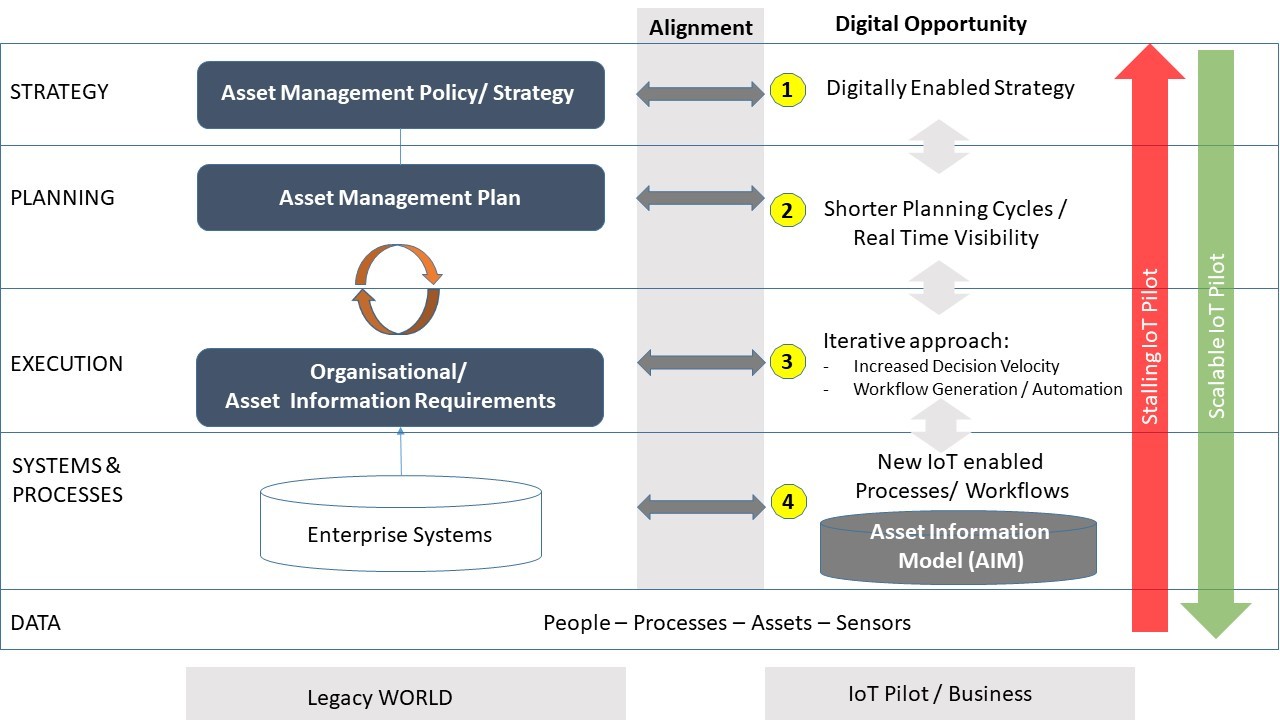A large part of the tech industry has bet the farm on IoT related growth. Revenue forecasts of IoT stars like Sigfox have failed to reach their target and in looking for the killer IoT Application, connected mousetraps and garbage bins remain recurring examples of leading use cases. Many IoT initiatives are stalling, the lack of integration between data generated by IoT networks and the legacy process, systems, planning tools and ultimately strategy is the most likely explanation. In tackling this issue, the tech industry will need to evolve alongside with its customers and partner with them to better capture the opportunities of IoT business.
Cheap Data
True, it is easy and cheap to equip a mouse trap with a sensor and create a data event once the mouse is trapped. The challenging part is what to do with the data. A new process needs to be created that starts a facility management activity to send somebody out to replace the mousetrap and in the billing system needs to facilitate billing for such an activity. This activity based facility management could be part of a cost efficiency programme launched by the building owner designed to reduce the operational costs and migrate to a more KPI based contracting of facility management services which ultimately affects the way people work in facility management. It is the strategic component that makes the business case for large scale IoT implementations.
In order to have a scalable IoT pilot, strategic objectives needs to lie at the core of the activity. Hackatons are usually counterproductive in that perspective as they put technology at the centre. Only strategic intent justifies the cost of re-designing business processes and changing the way organisations work.
Digital Alignment
Embracing the possibilities that emerge in the increasingly digital environment we live in does not come natural for most organisations. It is a change management programme that affects all parts of the organisation and starts with a digital strategy. The “Digital” opportunity associated with doing this is to create an agile organisation with short decision cycles based on data insight. Aligning the organisation with this approach is a challenge but essential in reaching a scalable digital / IoT Business. The figure below demonstrates what this means for asset management operations and information flow Model (based on ISO 55000 / PAS 192-3).
FIG 1: Digital Transformation applied to Asset Management Environment
In setting up successful scalable IoT Pilots, only a top-down approach (green arrow in Fig 1) makes sense. An IoT pilot driven by the IT department, not aligned with the business strategy, almost certainly does not scale and often is the result of technology push in combination with subsidies (red arrow in Fig 1).
A new approach needs to be developed towards Digital/IoT innovations, more linked to a Build – Measure – Learn philosophy. Shorter planning cycles and multiple iterations to fine tuning operations is an imperative for thriving in a digitally enabled world. This is not only an organisational challenge, it also challenges the legacy enterprise systems.
If you build it, they will come
The same challenges that apply to the customers of the tech industry, apply to the tech industry itself. Solutions design and business models needs to accomodate the iterative transformation path customers go through. A new set of tools designed to connect things with systems and people using dynamic workflows need to emerge on the market. In addition, technology vendors need to adapt a more consultative approach and partner with their customers to make the journey together. This is not in the DNA of the technology industry having thrived for decades on transactional business and installing monolithic systems. The moto “if you build it, they will come” is no longer valid in the digital economy. Guaranteeing the long term success of the customer will become a shared target.
Looking forward
In a digitally economy, don’t bet the farm on making digital mouse traps. Instead develop solutions that enable you to evolve with your customers, in an iterative and dynamic way linking the customer success to your success.

